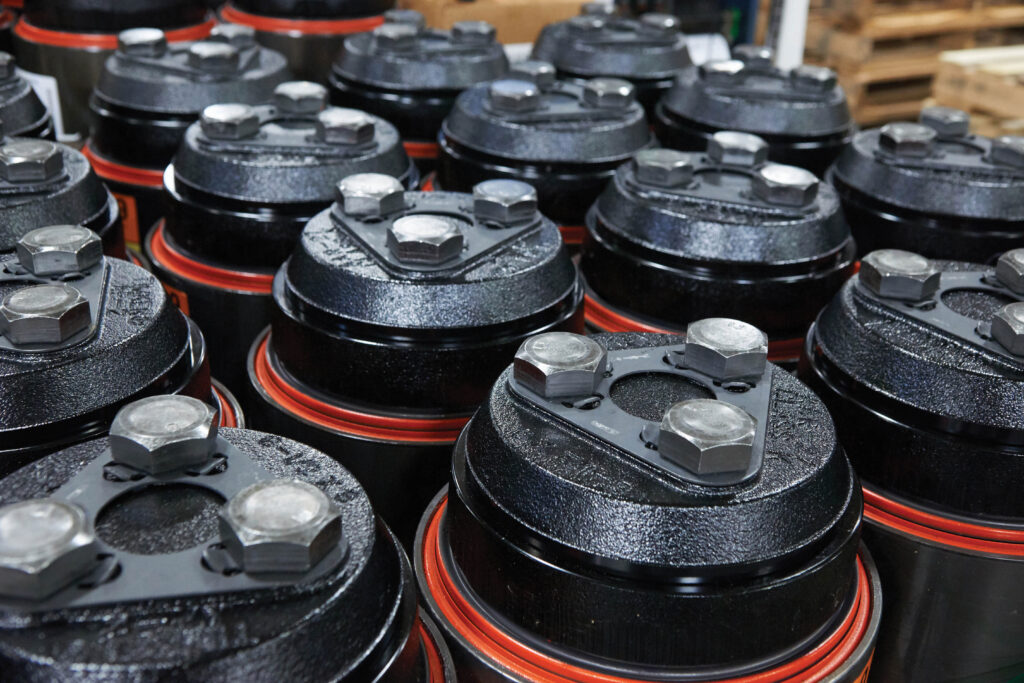Expertise
Next Stop: Engineering for the Next 100 Years of Rail
It’s official: the global population just topped 8.1 billion. The United Nations expects the upward trend to continue, forecasting a total population of 9.7 billion by 2050. That kind of growth creates new challenges for balancing the needs of people with preserving the environment.
As the world pursues ambitious net zero emissions goals, rail remains the most efficient choice for transporting people and essential goods worldwide. Based on 100 years of engineering expertise, today’s Timken product innovations are advancing efficiency and sustainability in electric passenger railways, and traditional freight operations, for a more carbon-neutral future. Kate Immel, product manager for rail, explains.
A Century of Customer-Centric Innovation
Timken innovation actually dates back 125 years to 1899, when the company solved the challenge of friction in early automobiles with its introduction of the Timken® tapered roller bearing (TRB). By 1923, Timken was proving the technology’s advantages for the rail industry as well. The first rail installation of a TRB improved passenger comfort and operating efficiency in an Ohio-based interurban streetcar; today, the company’s All-Purpose “AP” family of integrated bearing assemblies is a gold standard for the global rail market.
According to Kate Immel, product manager, generations of Timken engineers have cultivated a deep understanding of rail applications to develop transformative product solutions that address changing market needs. Examples include the original AP® bearing, a 1950s innovation that provided a practical solution for the era’s common problem of overheated axle bearings; the compact AP2™ rail bearing which enhanced load carrying capabilities for heavy trains when it launched in 1994, and the 2015 development of the EcoTurn® labyrinth seal, which continues to save operators thousands of gallons of fuel and reduce emissions by several tons per year.
“We have a track record of introducing new products that solve the rail industry’s toughest challenges of the time.”
Kate Immel
Product Manager, Rail
“We have a track record of introducing new products that solve the rail industry’s toughest challenges of the time,” said Kate Immel, product manager for rail at Timken. “It gives us confidence that whenever we try something new, it’s going to lead to an innovation that has significant value in the market.”
Today, Timken engineers work closely with rail customers to address trends like electrification and sustainability. “Our primary focus is efficiency because the world needs infrastructure that can handle the future,” Immel said.

Timken® AP-2 bearings meet the growing demands of rail transportation: increased loads, speeds and longer wheel life. Their compact design incorporates fewer components, reduces bearing weight and offers improved safety and reliability.
World-Class R&D for Novel Electric Passenger Rail Solutions
Timken’s laboratory, prototype assets, and capabilities drive its R&D initiatives to push the company and the rail industry forward. Product innovations exclusively originate with specific customer requests and industry challenges.
Currently, Immel is part of a cross-functional team developing efficient tapered roller bearings that optimize power consumption for electric passenger trains — making an already sustainable transportation method even more energy efficient.
Initial prototypes are based on recent work by Timken engineers who developed power-dense, energy efficient bearings for electric vehicles and sustainable mobile industrial equipment. The designs are applied to the unique operating parameters for rail electrification, and adjustments are made to bearing geometries and lubrication. The reimagined efficient bearings are then tested against customers’ desired criteria for the product’s lifecycle and power consumption, which can reduce an operator’s overall carbon footprint.
Timken is currently modeling and testing bearings for a main line electric passenger rail application in Europe. Immel explains that the solution could help operators vastly reduce power consumption while also reducing their total cost of ownership significantly over the 30-year life of a train, based on current European rail electricity cycles.
“Operators want to run sustainably, but it has to make economic sense,” she said. “It’s our role to solve for both of those objectives, and we’re doing so successfully.”
Meeting Global Customer Needs and Emerging Trends
Even as Timken innovates new solutions for Europe’s mature electric rail market, the company supports the electrification of both passenger and freight rail lines globally. Standards set in Europe often become the standards for electric rail systems worldwide.
In South Korea, where officials aspire to replace all diesel trains with electric-hydrogen powered trains by 2050 , highly engineered Timken axle bearings support routine maintenance for the current fleet of high-speed electric passenger locomotives.
Timken also developed a new cylindrical roller bearing (CRB) for motor suspension units, which are the linchpins between traction motors and wheels in a locomotive. The innovation is being designed into a new fleet of electric locomotives. The CRBs improve operating efficiency and lengthen maintenance intervals for electric freight locomotives, supporting India’s ambitious goal to establish the world’s largest sustainable rail network. In 2019, Indian Railways carried more than 400 million passengers and 47 million tons of cargo.
Beyond bearing solutions, Immel noted that rail operators are keenly interested in understanding the overall lifecycle efficiency and cost of their trains at both the macro and micro levels. One current global industry trend is the lengthening of maintenance intervals so trains can move more people and goods in less time.
Timken product engineers, tribology experts, and product testing specialists are currently formulating and testing long-life, corrosion-resistant greases to prove where longer maintenance intervals are appropriate.
“By reducing preventative maintenance, we can lower total cost of ownership but more importantly cut down on the amount of grease that needs used in the first place — preserving the environment and helping rail maintenance teams work more efficiently.”
Customer-centric Timken R&D drives sustainable solutions across transportation and infrastructure. Learn more about the company’s contributions to more sustainable commercial vehicles, viable electric flight, and the future of urban mobility.

Last Updated: 2025/02/24
Published: 2024/10/1

